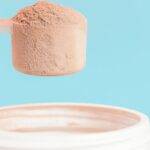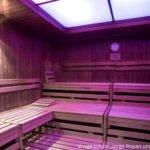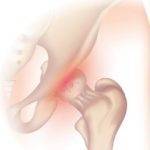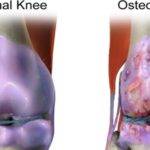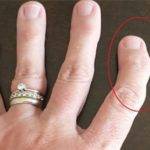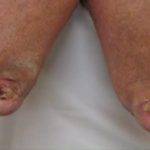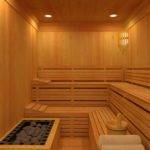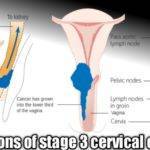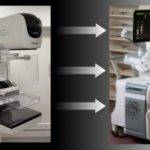
Table of Contents
The use of saunas has been attributed to numerous health benefits some of which are on the anecdotal level. It is good for heart health, pain relief, improved healing, reduced respiratory distress, and relaxation most of which are backed by scientific research.1
There is no proof it is good for weight loss via sweating. People using Sauna could lose as much as a pint of water via sweating which is a channel through which waste products are also excreted. This loss of water is instantly replenished in your next fluid intake.
Sauna bathing could increase your heart rate to between 100 and 150 beats per minute(BPM). The increased heart rate is synonymous with what you get from exercises and comes with the expected benefits on your cardiovascular system as you would expect from physical workouts.
The length of time Saunas have been in use is proof of their usefulness or health benefits. It has been in use in Finland for thousands of years and as much as 30% of Finnish still use it to date.
In this article, we’ll take an in-depth look at what is good about a Sauna as well as the demerits and risks involved.
What is Sauna?
A sauna is a heated room or enclosure people relax in for the health benefits associated with the heat and sweating. Depending on the source of the heat, it could be called a dry or wet sauna (steam room). Whichever one you prefer, there is an application of heat within a limited period.
Dry Sauna.
As the name suggests, the heat is generated under low humidity of between 10 to 20% via one of three primary sources:
- Electrical heater: The heaters are designed to convert electrical energy into heat to heat the room.
- Wood burning: The heat comes from burning wood which, like electrical heaters, generates dry heat that warms up the room.
- Far-infrared: This works differently from the previous two. Here, lamps use infrared radiation to heat your body directly rather than the entire room. The room temperature in this type of sauna is considerably lower than in the previously listed ones. In health professions like physical therapy, infrared lamps were once in rampant use.
The effect of infrared saunas on the body is pretty much similar to dry saunas and the heat is generated from electrical energy. The conversion process is from electrical energy to light rays which generate heat.
Wet Sauna.
This is otherwise called a steam room. The heat in a wet sauna comes from steam generators which heat up water and release the steam into the room. It creates a moist heat with high humidity of over 50% but is not as hot as a dry sauna though wet saunas feel hotter for obvious reasons.
Wet saunas are quite beneficial for people with long or short-term respiratory issues like asthma and nasal congestion. I have found it to be beneficial in relieving the symptoms of cough each time I have one and have to use a wet sauna.
Going by personal experience, cold and dry air works differently as a wet sauna so I try to avoid it whenever I have a cough.
Sauna benefits, disadvantages, risks, and contraindications.
Just as I have mentioned a couple of times, saunas are beneficial in many ways. Depending on your most important needs, you may either opt for a dry or wet sauna as one has proven to be more effective than the other in meeting certain health needs. However, there are similarities in how they work.
A wet sauna or steam room may be more beneficial for someone with asthma, nasal congestion, or certain allergies affecting respiration but the humidity levels make it a breeding ground for some germs or bacteria. For this reason, it needs regular cleaning or sanitation.
Kindly keep in touch by subscribing to our newsletter:
22 Benefits of Sauna.
Whether you get in a wet or dry sauna, below are some of the proven benefits of sauna use:
1. Cardiac health: Long-term use of a sauna has been shown to offer protection against cardiovascular diseases. It has similar physiological effects on the body as moderate exercises and achieves better cardiac health by reducing your body’s resting systolic and diastolic pressure over time according to the Journal of Experimental Gerontology.2
2. Hypertension management: With its effect in reducing both systolic and diastolic blood pressures, it is an effective tool in the management of hypertension and by extension, the prevention of cerebrovascular accident (CVA) otherwise known as stroke. Stroke is a major cause of hemiplegia as highlighted in another article you may want to see.
3. Pain management: Pain relief is a common reason why people use sauna and it can be so effective that it relieves pain that results from some medical conditions or injuries as a study has shown.3
4. Relieve symptoms of arthritis: In one study infrared sauna was used to treat patients with rheumatoid arthritis(RA) and ankylosing spondylitis(AS) for 4 weeks.4 It was found to be effective in reducing symptoms like pain, stiffness, and fatigue associated with these conditions.
5. Stress relief: This is another common reason for the use of saunas. It helps with relaxation and destressing which are among the commonest reasons they are used as suggested in a survey.5
6. Asthma management: Sauna is effective in improving lung function which helps with symptoms of asthma and bronchitis. In this regard, it has been shown to improve your lung’s tidal volume, vital capacity, forced expiratory volume, and general breathing according to the American Journal of Medicine.6
7. Prevention of neurodegenerative diseases like Alzheimer’s: A study conducted on middle-aged men in Finland who used saunas 4 to 7 times weekly found it reduced their risk of Alzheimer’s disease by 65%.7
8. Detoxification: Saunas make you sweat through which your body excretes waste products and to some extent toxins like urea and heavy metals. It should be noted that the amount of toxins eliminated during sauna bathing is much less than what your body eliminates during active exercises.
9. Post-workout recovery: It helps with the healing of sore muscles, recovery from fatigue, and clearing of lactic acid from your muscles after workouts. For this reason, it is available in some gyms including a few Planet fitness centers, however, most of them don’t have it installed for certain reasons you may want to find out in an earlier article.
10. Skin health: Wet saunas have been found to help moisturize and clean your skin of dead cells. Though the dry one leaves a drying effect it also feels not as hot as the wet one as evaporation of sweat counters the heat. Both types improve cutaneous blood supply that clears metabolites among other benefits.
11. Burning of some calories: Sauna bathing increases your basal metabolic rate. For every 1-degree Fahrenheit rise in your body temperature, there is a corresponding 7% increase in your basal metabolic rate. An increase in metabolic rates subsequently increases the amount of calories your body can burn per unit of time.
12. Anti sarcopenia: A study has shown sauna bathing is helpful in the prevention of a progressive loss of muscle mass and functional strength associated with aging. This is medically known as sarcopenia. Sarcopenia prevention is also a benefit of resistant exercises like deadlifts so you may want to engage in it as well for better results.
13. Promotion of general well-being and healthspan extension: It induces the physiological responses you get from exercises which promotes well-being and lengthier healthspan.
14. Management of congestive heart failure: A study has revealed that sauna bathing increases left ventricular ejection fraction, reduces ejection time, and improves arterial compliance and flow-mediated dilation.
15. Management of chronic bronchitis: A steam room or wet sauna has been found to help in relieving patients suffering from chronic bronchitis by improving lung function.8 (source)
16. Reduced risk of dementia: A study conducted on middle-aged Finnish men showed moderate to high frequency of sauna bathing lowers the risk of dementia and Alzheimer’s disease.9
17. Improved sleep: People on regular sauna usage have reported enjoying better sleep as revealed in a survey done in Finland, Australia, and the US. (source)
18. Reduction of chronic inflammation: Inflammation is part of a healing process but chronic inflammation is a problem. It has been associated with the development of several diseases including autoimmune arthritis. Sauna bathing is known to reduce levels of inflammatory markers which may explain its effect in lowering the risk of chronic diseases.10 (source)
19. Heart disease recovery: It is beneficial in post-myocardial infarction care according to the Journal of Alternative Medicine by Crinnion and Walter J.
20. Reduction of stress-induced cell damage: Sauna bathing induces the production of heat shock proteins (HSPs) which help cells to adapt to stress and prevent injury. (source) Heat shock proteins also have known immune functions that make them part of immunotherapies for use in cases of cancer and infections as published in Nature Reviews Immunology.11
21. Increases life span: A study has shown sauna helps you live longer. This is apparently due to the numerous health benefits some of which have been listed here. It was discovered that those who use sauna frequently live longer than those who don’t.12
22. Reduced incidence of acne: The skin cleansing effect of sauna bathing and the resultant opening of skin pores may reduce your risk of acne and improve existing ones.
Disadvantages.
Dry saunas could result in excessive drying of your skin. Additionally, prolonged exposure to saunas could lead to dehydration or heat stroke.
For these reasons, you may want to limit your sauna sessions to not more than half an hour each time but ideally 15 to 20 minutes. Reducing the length of your sessions may be a good idea with increasing frequency of weekly sauna usage.

Risks.
- Blood pressure fluctuation: Sauna bathing does have a profound effect on heart functions and blood pressure. If you are a known hypertensive, it’s important to ensure your blood pressure is well controlled before using a sauna. Also, the sauna’s blood pressure-lowering effect over time makes it imperative you speak to your healthcare provider if you are a known hypotensive patient.
- Risk of stressed-out heart: Some people may have heart conditions that limit how much activity the heart can take before showing symptoms like angina pain. Saunas have a similar effect on the heart as workouts. Restricting your use of it to the recommended timing is advised especially when using it after workouts.
- Dehydration: Sauna users could lose a considerable amount of water during usage. This leaves them prone to dehydration. The risk is higher in those who use it after a workout and those who may be on certain medications like diuretics. The risk of dehydration and cardiac arrhythmias is also increased if you had alcohol before sauna bathing. So you should avoid taking alcohol before sauna.
- Hyperthermia: Long exposure to high heat leaves you at risk of this. The risk is higher in people with fever which is characterized by a lack of your body’s ability to regulate its temperature. You should avoid sauna bathing when you are sick.
- Risk of injury: There have been reports of people who sustained burns from sauna usage. In another scenario, someone fell asleep during sauna bathing and fell with his face hitting the sauna heating equipment. Unfortunately, he didn’t survive the fall.
- Effect on sperm production(spermatogenesis): For normal function and sperm production the testicles are kept at temperatures about 3 degrees Celsius below your body’s normal temperature. Sauna bathing exposes them to higher temperatures which affect sperm production otherwise called spermatogenesis, however, the effect is short-lived and doesn’t lead to fertility problems.
You may want to talk to your healthcare provider before using a sauna if you suffer from a low sperm count.
Contraindications.
Studies have shown saunas reduce the incidence of heart diseases and boost heart health but they are contraindicated if you have any of the following heart conditions:
- Unstable angina pectoris,
- A recent Myocardial Infarction, and
- The severe form of aortic stenosis. (source)
How long to stay in a sauna?
For a new user, a 5 to 10-minute duration of sauna bathing should be fine for a start. You may increase the period of exposure and frequency with time as you get used to it. 15 to 20 minutes of Sauna should be adequate to enjoy most of the health benefits discussed earlier.
It is not recommended you stay in a sauna for more than 30 minutes at any given time to avoid the risks associated with it. The more frequently you use it, the less time you may want to spend each time. Kindly hit the share button if this article was helpful and see you in the next one.
Reference
- Hussain, J., & Cohen, M. (2018). Clinical Effects of Regular Dry Sauna Bathing: A Systematic Review. Evidence-Based Complementary and Alternative Medicine : ECAM, 2018. https://doi.org/10.1155/2018/1857413 ↩︎
- Patrick, R. P., & Johnson, T. L. (2021). Sauna use as a lifestyle practice to extend healthspan. Experimental Gerontology, 154, 111509. https://doi.org/10.1016/j.exger.2021.111509 ↩︎
- Matveĭkov GP, Marushchak VV. [An evaluation of the effect of the sauna on the clinical, laboratory and psychological indices in rheumatoid arthritis] Terapevticheskii Arkhiv. 1993 ;65(12):48-51. PMID: 8146771. ↩︎
- Oosterveld, F.G.J., Rasker, J.J., Floors, M. et al. Infrared sauna in patients with rheumatoid arthritis and ankylosing spondylitis. Clin Rheumatol 28, 29–34 (2009). https://doi.org/10.1007/s10067-008-0977-y ↩︎
- Hussain, J. N., Greaves, R. F., & Cohen, M. M. (2019). A hot topic for health: Results of the Global Sauna Survey. Complementary Therapies in Medicine, 44, 223-234. https://doi.org/10.1016/j.ctim.2019.03.012 ↩︎
- Hannuksela, M. L., & Ellahham, S. (2001). Benefits and risks of sauna bathing. The American Journal of Medicine, 110(2), 118-126. https://doi.org/10.1016/S0002-9343(00)00671-9 ↩︎
- Patrick, R. P., & Johnson, T. L. (2021). Sauna use as a lifestyle practice to extend healthspan. Experimental Gerontology, 154, 111509. https://doi.org/10.1016/j.exger.2021.111509 ↩︎
- Laukkanen, J. A., Laukkanen, T., & Kunutsor, S. K. (2018). Cardiovascular and Other Health Benefits of Sauna Bathing: A Review of the Evidence. Mayo Clinic Proceedings, 93(8), 1111-1121. https://doi.org/10.1016/j.mayocp.2018.04.008 ↩︎
- Laukkanen, T., Kunutsor, S., Kauhanen, J., & Laukkanen, J. A. (2017). Sauna bathing is inversely associated with dementia and Alzheimer’s disease in middle-aged Finnish men. Age and Ageing, 46(2), 245-249. https://doi.org/10.1093/ageing/afw212 ↩︎
- Setor K. Kunutsor, Tanjaniina Laukkanen & Jari A. Laukkanen (2018) Longitudinal associations of sauna bathing with inflammation and oxidative stress: the KIHD prospective cohort study, Annals of Medicine, 50:5, 437-442, DOI: 10.1080/07853890.2018.1489143 ↩︎
- Srivastava, P. (2002). Roles of heat-shock proteins in innate and adaptive immunity. Nature Reviews Immunology, 2(3), 185-194. https://doi.org/10.1038/nri749 ↩︎
- Redberg RF. Health Benefits of Sauna Bathing. JAMA Intern Med. 2015;175(4):548. doi:10.1001/jamainternmed.2014.8206 ↩︎






